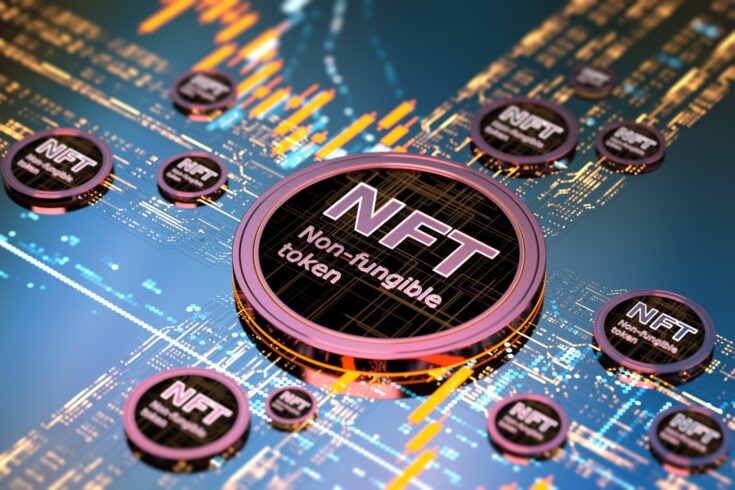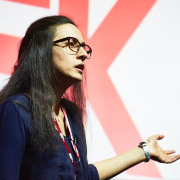Exploring how museums generate revenue
I first started exploring novel ways in which museums could generate revenue from their images with emerging technologies, when I completed my PhD in 2017.
I found it very striking that museums could not monetise the wealth of content they possess beyond image fees (licensing) and merchandising (gift shops), in order to boost their ever-diminishing budgets. Content such as the hundreds, or thousands, of professionally digitised images of culturally significant artefacts.
I have a background in engineering and have been awarded an early career researcher leadership fellowship by the Arts and Humanities Research Council (AHRC). Taking advantage of this, I focused my research and work on ways museums could leverage emerging technologies to monetise their digitised collections, generating new streams of funding.
The meteoric rise of NFTs
Originally, my research explored technologies, such as:
- artificial intelligence (image recognition)
- rapid, print-on-demand automation.
However, when NFTs emerged in early 2021 they completely disrupted my area of study (monetisation of images).
Looking into this new medium back in April, I discovered that, in my view, NFTs had managed to achieve what was seemingly impossible up until that point. To bring scarcity into the digital world.
What are NFTs?
In a nutshell, an NFT is a digital equivalent of limited-edition prints.
Photographers and digital artists have been using limited-edition prints (a series of prints signed and numbered by the artist) in order to create artificial scarcity. This is to make up for the fact they do not have an ‘original’ artwork to sell.
The difference with NFTs, is that the print copy is a digital copy instead and the signature is not physical, but digital and, more precisely, cryptographic.
NFTs in the media
The digital artwork image ‘5,000 Everydays’ by Beeple was auctioned by Christie’s for a record $69 million US dollars in March 2021. NFTs then became the subject of mainstream media for the first time.
Museums are usually relatively late adopters of cutting-edge technology (for example, due to funding constraints and also because, arguably, technology is not amongst a museum’s top priorities, at least pre-pandemic). However, museums have been surprisingly quick to start exploring this new tool, perhaps due to the devastating effects of the pandemic on their finances.
First was the Uffizi Gallery in Florence, which sold a NFT of Michelangelo’s ‘Doni Tondo’ for $170,000 US dollars in May.
Then in the summer the Hermitage Museum raised nearly half a million by selling four NFTs, including Leonardo Da Vinci’s ‘Madonna and Child’.
And more recently the British Museum sold NFTs of Hokusai’s woodblock prints.
Fierce criticism, environmental impact and technical challenges
Although major institutions ventured into NFTs, within circles of museums, professional NFTs were fiercely criticised.
Primarily, criticism concerned their environmental impact, because the vast majority of NFTs operate on the Ethereum blockchain network, which is particularly energy consuming.
Beyond that, there were projects exploiting museum images with open licenses.
Finally, there was misinformation; many people mistakenly thought that selling an NFT involves the sale of the actual artwork copyright.
However, looking into all these issues, one could argue that NFTs are a new medium and much of it depends on how they are being utilised. Concerning the above:
Environmental impact
Environmentally-friendly NFTs already exist and operate on energy-efficient blockchains.
No-one is forced to use Ethereum for their NFTs over other blockchain networks that have minimal carbon footprint.
For more please see our article, section 6.2. environmental considerations.
Open data
The project that tried to exploit openly licensed, museum images did not make any money.
They were swiftly picked up by the museum community and when the Rijksmuseum was asked about it, they stated “We have an open data policy to connect our collection to as many and diverse people as possible”.
Also see our article, section 5. digital collectibles and OpenGLAM.
Copyright
Regarding copyright, indeed more clarity is needed.
However our research showed that in the vast majority of cases, NFT sales are similar to the sale of tangible paintings.
No copyright is being transferred to the collector, unless explicitly stated.
See our article, section 4.2 NFTs and copyright.
Technical challenges
In my opinion the greatest risks surrounding NFTs are primarily technical.
There are critical persistence issues, since very little data is stored on the permanent and immutable database that is the blockchain. The majority of metadata is stored on external databases (for example, the InterPlanetary Filesystem), whose permanence and availability is not guaranteed.
‘Wallets’ are used to purchase and store NFTs. The irreversible loss of these wallets means that collectors and museums can be permanently locked out of their own wallets, unless they use so-called ‘custodial’ wallets. These are wallets managed by third-party companies. This, however, defies the purpose of decentralisation, which is the foundation of blockchain technology.
Knowledge gap and NFTs as a new medium
When we first started working on our journal article, we were aiming for a short position paper on NFTs and museums.
However, we soon discovered the dearth of knowledge for NFTs for cultural heritage. And as such, the article came to be nearly 12,000 words long in an effort to comprehensively scope the landscape of NFTs and museums.
NFTs are still a nascent technology, plagued by risks and unknowns, but one that is developed and improved rapidly, by being part of the fast-paced world of blockchain technology.
In my view, NFTs cannot be labelled as good or bad. They are simply a powerful, new medium. A tool; and as such it all depends on how ones make use of it.
Further information
The journal article, crypto collectibles, museum funding and OpenGLAM: challenges, opportunities and the potential of NFTs, is available in Open Access. The article is written by:
- Dr Foteini Valeonti
- Professor Antonis Bikakis
- Professor Melissa Terras
- Professor Chris Speed
- Professor Andrew Hudson-Smith
- Dr Kostantinos Chalkias.
Follow Dr Foteini Valeonti on Twitter.
The content in this blog post is the view of the author and not UKRI.
Top image: Credit: Vertigo3d, Getty Images




